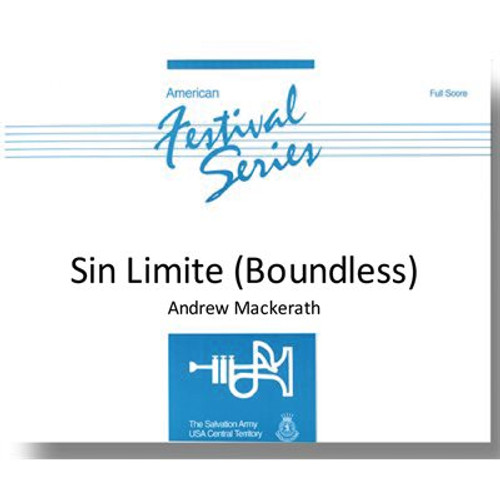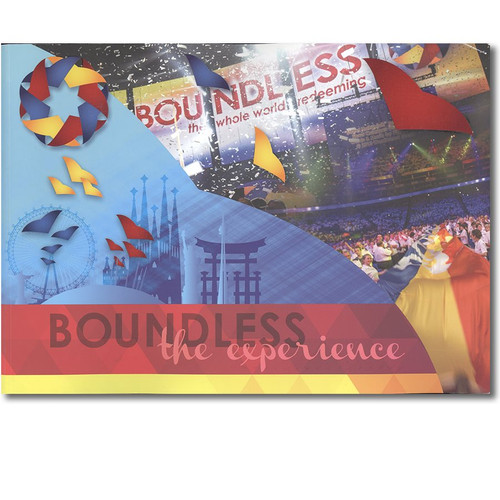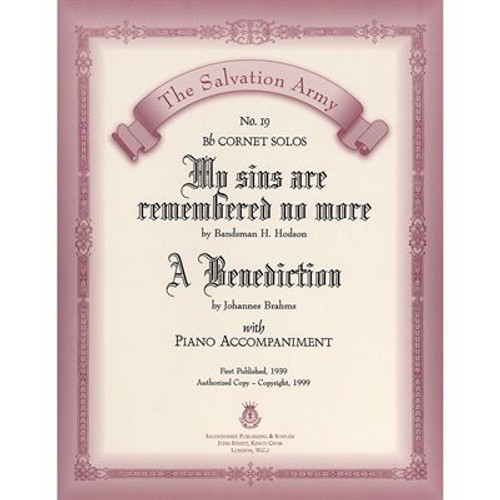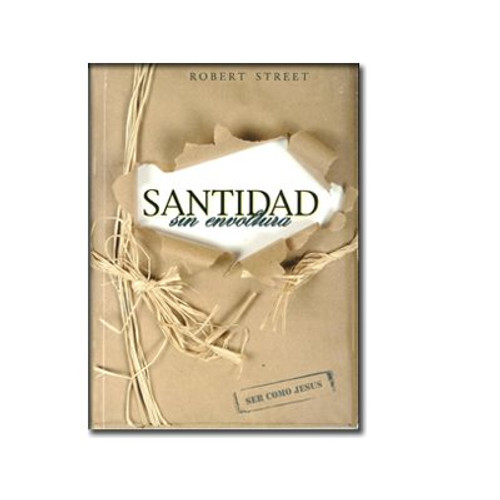Product Description
Sin Limite (Boundless)
Composer: Andrew Mackerath
Produced by The Salvation Army - Central Territory
Score Sample
NotesThis is a digital product. After purchasing you'll be able to download it from Account -> Orders -> Select order number
Score Notes
Notes:
Program Note:
This overture was written for Bandmaster Omar Perez and the South America East Territorial Band for their visit to the Boundless Congress in 2015. The music is based around two melodies: O Boundless Salvation and The Wonder of His Grace. The lyrics of both songs emphasize the boundless nature of God��s love.
Note to the Conductor:
Beginning to bar 15: The opening is a representation of joy but ensure it doesn��t become too frenzied. There are two main ideas at play here, the ��l��-mi-te�� rhythm which punctuates the piece throughout and the references to O Boundless Salvation. It is marked ff at the start, but this must not be at the expense of the crescendo in bar 3. Controlled dynamic playing will ensure the horn and euphonium figures cut through well in bars 9 and 10.
Bars 15-38: The presentation of the first melody is accompanied by a very delicate accompaniment. Each instrumental group is chosen for a specific timbre so that there is sufficient contrast between the mellow and the bright sonorities. Emphasize this but keep the melody at the forefront. In bar 18 the cornets make the first melodic reference to Tucker (��Thou Christ of burning, cleansing flame��), an acknowledgement that the premiere performance was to be given on Founder��s Day. Try to ensure the crescendo doesn��t begin too early through this passage with the peak coming in bar 32.
Bars 39-54: Here the euphonium presents an original tune against thematic references to O Boundless Salvation. The scoring is larger at this point and the delicate interplay between parts and sonorities is the priority.
Bars 55-70: The horns now present the second melody: The Wonder of His Grace. Note that the dynamic in the horns is below that of the euphonium, and should be treated as a distant hint of the tune rather than its own overt statement.
Bars 71-88: Familiarization with the lyrics of The Wonder of His Grace will help with the interpretation of this section. Sufficient to say a tight rhythmic rein is key to success. This is most likely to be achieved by keeping the syncopation light.
Bars 89-100: This transition passage uses the tune Tucker again. Work for an emphasis on delicacy and transparency.
Bars 101-135: The melody here is a march-like treatment of motives from all three of the tunes presented so far. There should be a strong sense of purpose about this section, arriving at measure 135 with a full-bodied sound ready for the reprise of the opening music.
Bar 135 to the end: This is the final statement of the piece using material presented in the opening in a slightly extended form. The fact that it is extended means that it is important to keep something in reserve for the final bars.
Program Note:
This colorful selection uses three songs of contrasting idiom to portray a progression of the human condition from despair to triumph:
Although this is a more extended work (approximate duration: 9:00), the inclusion of optional introductions and endings provides added usefulness of presenting singular performances of these three songs as follows:
Sometimes I feel like a motherless child: Beginning to optional ending at bars 39-40.
Reach out and touch: Bar 42 to optional ending at bars 110-113.
Storm the forts of darkness: Begin with snare drum roll (can be a pause) one beat before 117. Play to end as written.
Program Note:
This beautiful setting for solo trombones and band of the folk song O Waly, O Waly is often associated with the words of Isaac Watts:Note to the Conductor:
We are pleased to present this sensitive setting as it was initially conceived for solo trombone. Written for the Amsterdam Staff Band's 2005 tour of the United Kingdom, it was later adapted as a feature for trombone ensemble, at the request of Salvationist Publishing & Supplies, where it appears in 2009 as General Series 2059.
We are grateful to SP&S for kindly giving permission to publish this solo version in the American Festival Series. Of this work, the arranger, Olaf Ritman writes: "I consider this song my personal testimony."
Beginning to bar 12: The accompaniment, particularly at the opening and closing of the piece, is atmospheric, with suspended muted chords supporting the rubato trombone solo. The judicious use of percussion (chimes, bass drum and suspended cymbal) will add to the color and mood. Be sure to cue the chimes at bars 3 and 6.
at bar 4, a clear downbeat cure for the bass drum will help clarify tempo following the soloist's pause. Also give attention to the muted sforzando in cornets and trombones in bar 8.
Bars 13-52: Following the ritardando at bar 12, it is essential for the conductor to establish the correct tempo at bar 13, allowing the soloist lyrical freedom and the ability to sustain long phrases as the tune begins at bar 16. The descending scale gesture at bar 39 should be measured, yet not overstated.
Bars 53-74: There is a slight slowing of tempo as soprano, flugel and horns take the theme while cornets, trombones and euphonium adding countermelody.
Bars 75 to end: Returning to the opening tempo, it will again be helpful to give clear cues for the chimes, bass drum and triangle from bars 75 to the end.
[Note: This solo can be heard on the Chicago Staff Band recording,Kurios, performed by Brett Tolcher]
Program Note:
The tune Randolph, by preeminent English composer Ralph Vaughan Williams was first published in 1906 as a setting of Jeremiah Rankin's hymn, of which the first verse reads:
Note to the Conductor:
William Gordon's stunning four verse setting of Randolph progresses from the quiet simplicity of unison cornets and with each succeeding verse builds to a magnificent organ-like finale.
Gratitude is expressed to the publisher and copyright holder, Oxford University Press, for granting permission to publish this brass setting in the American Festival Series.
Beginning to bar 9: A ceremonial snare drum roll is the sole accompaniment to the cornets opening unison rendering of the tune.
Bar 10-17: The mellow instruments (flugel, horns, baritones and euphoniums) provide a beautiful change of color here with 2nd horn, baritones and euphonium seamlessly adding harmony.
Bars 18-26: A two beat snare and bass drum roll signals the entrance of the cornets and trombones in a more brilliant third verse setting. Here the bass trombone is essential (cued in Eb bass). Bring out the rising soprano cornet line from bar 22.
Bar 27 to end: A dramatic percussion roll precedes the "open pipes" organ like sounds of the final verse at bar 27. Be sure to observe the swell in bar 30, followed by a dramatic decrescendo before building to the final climatic chords. Avoid any tendency to overblow while striving for the full sonorities of this majestic finale.
[Note: this setting is especially effective when performed as a benediction "in the round" with players grouped by sections surrounding the audience.]







